
Pair hardy geraniums
9 successful pairing ideas!
Contents
Hardy geraniums are hardy plants with soft and delicate flowering, making them quite easy to pair. They allow for the creation of rather natural and romantic flower beds.
They pair well with astrantias, ornamental grasses, and the light blooms of alliums. They perfectly dress the base of roses, enhancing an already romantic atmosphere. Planted in shade, under trees, they combine well with ferns and hostas, creating a natural and wild shade garden! They add a splash of colour at the base of trees and bushes. The more compact varieties, such as Geranium cinereum, are well-suited for use in rockeries, while the taller ones can be included in more traditional flower bed compositions.
Some varieties are particularly suited for pot or container cultivation. When combined with other perennials, they allow us to create stunning arrangements and add colour to balconies and terraces. They provide a good alternative to traditional pelargoniums, the classic “geraniums” found on window sills.
In mixed border
Plant your geraniums in a bed with other perennials. You can pair them with astrances, columbines, salvias, astilbes, or nepeta. Geraniums blend particularly well with alliums, as their colours harmonise easily and complement each other. For example, choose Allium christophii, for its large, airy purple inflorescences. Soft tones (blue, mauve, pink) pair perfectly with silver foliage, such as that of Stachys. You can take advantage of the flower spikes of Digitalis ‘Suttons Apricot’ to add height and lightness. Geraniums also pair well with lady’s mantle (Alchemilla mollis).
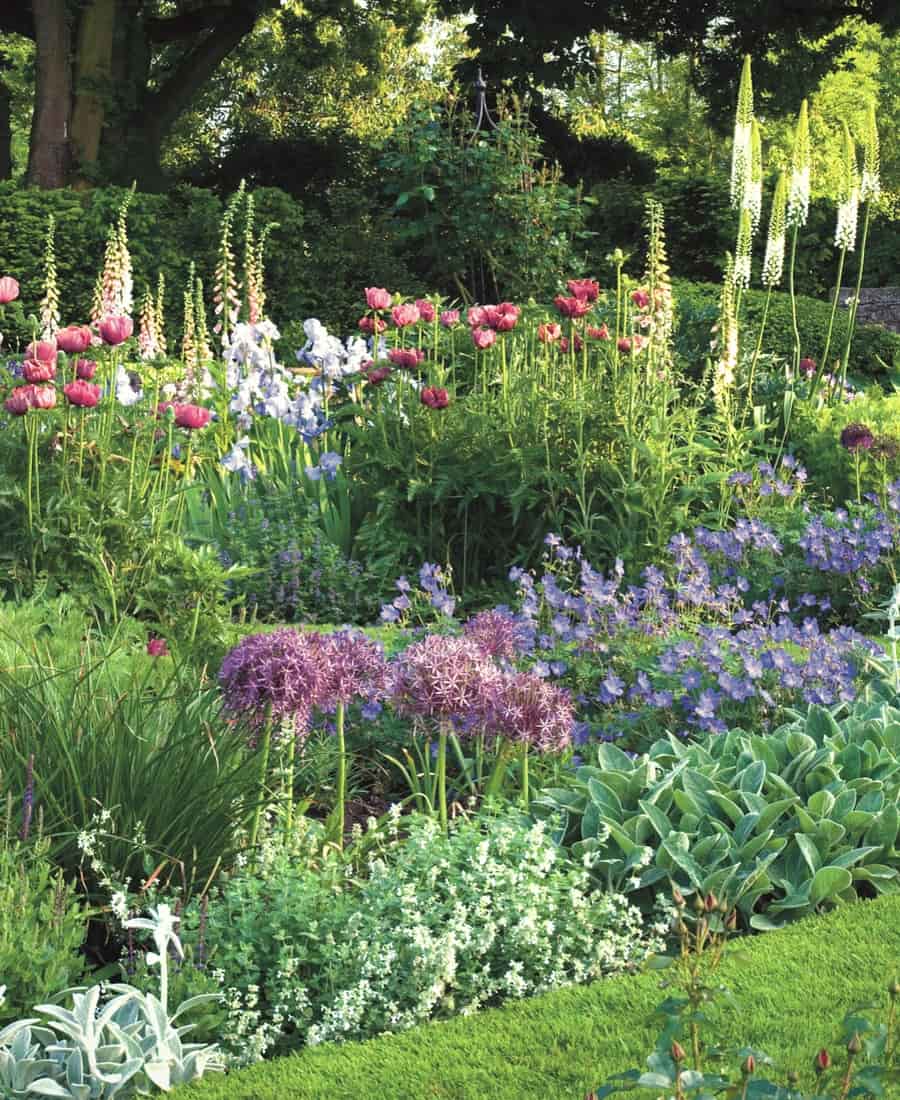
Geranium ‘Johnson’s Blue’ with Allium christophii, Stachys, Iris, Digitalis ‘Sutton’s Apricot’ (Copyright Clive Nichols – MAP)
In a pot or planter
Hardy geraniums adapt well to pot cultivation and add a splash of colour to a terrace or balcony. They can replace pelargoniums to create planters with slightly softer hues. Some varieties have long stems that cascade over the edge of the pot. This is the case with geranium ‘Rozanne’. You can create a beautiful arrangement by planting a clump of hardy geraniums alongside carex and other brightly coloured flowers such as dahlias or cosmos. These flowers will allow you to create stunning bouquets.
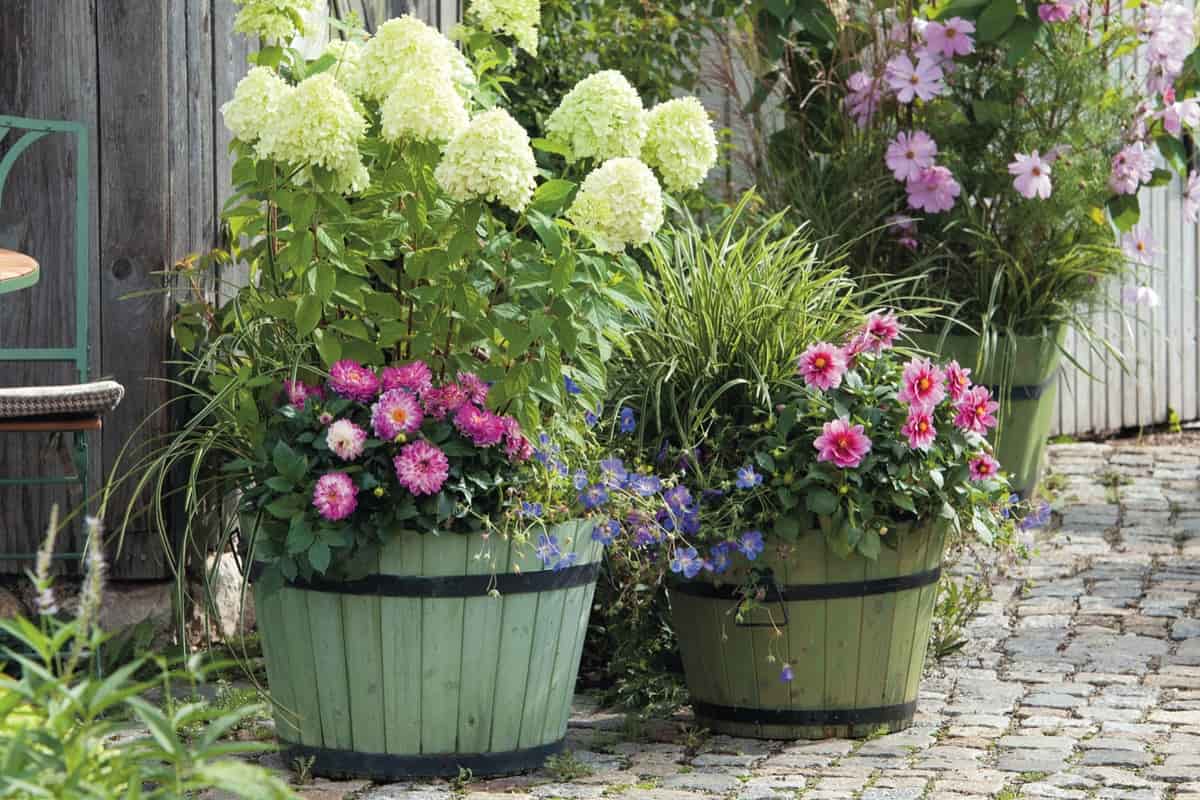
Hardy geraniums, Hydrangeas, Dahlias and Cosmos (Copyright Biosphoto – Friedrich Strauss)
Discover other Hardy Geranium - Cranesbill
View all →Available in 0 sizes
Available in 0 sizes
Available in 3 sizes
Available in 2 sizes
Available in 1 sizes
Available in 1 sizes
Available in 1 sizes
Available in 2 sizes
Available in 1 sizes
Available in 1 sizes
To dress the base of a rose bush
With their delicate hues, hardy geraniums create a romantic atmosphere. Plant them at the base of bush roses or bushes. Their colours easily complement those of the roses. In addition to dressing a often bare base, the geranium will help keep the soil cool, without competing for water and mineral elements. Moreover, you won’t need to weed around it anymore! You can use the ‘Ann Folkard’ geranium, its stems will tend to climb slightly on the rose! To enhance the romantic atmosphere, plant a few other softly coloured flowers nearby, such as peonies, delphiniums, Weigelia florida ‘Variegata’ or Deutzia gracilis. You can create a stunning contrast by pairing the blue-purple flowers of Geranium x magnificum ‘Rosemoor’ with the orange flowers of the ‘Lady of Shalott’ rose. These are complementary colours that enhance each other to create an impressive and intense effect.
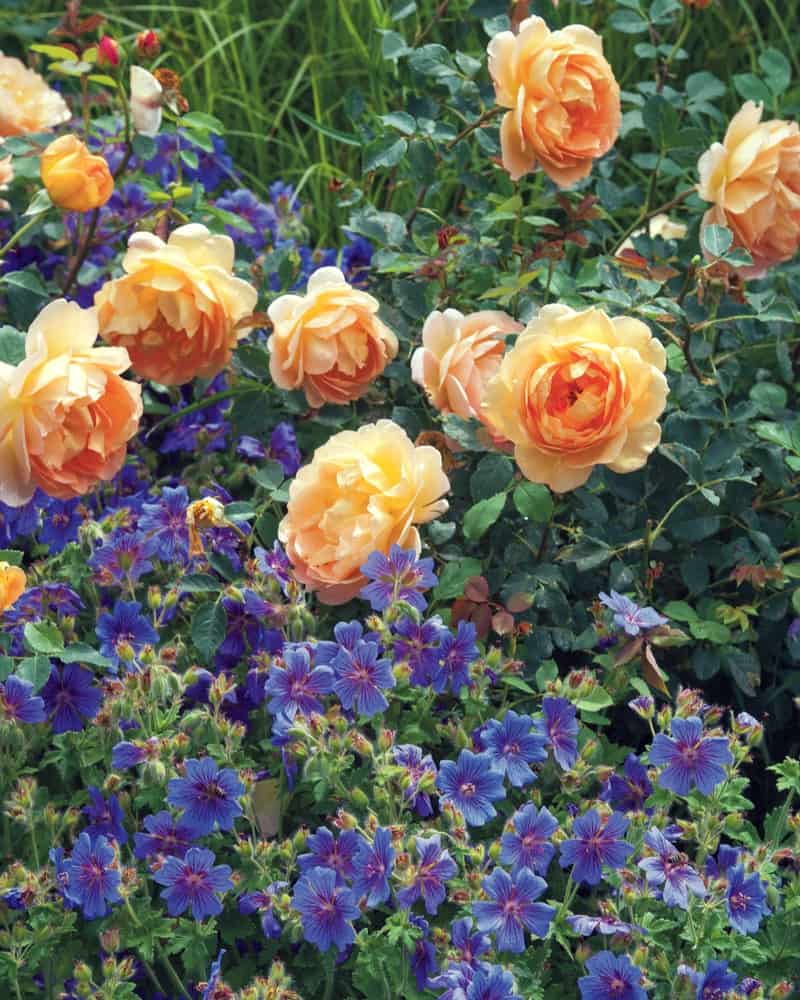
The geranium x magnificum ‘Rosemoor’ with the rose ‘Lady of Shalott’ (Copyright Biosphoto – Friedrich Strauss)
Read also
How to plant hardy geraniums?In woodland
Some hardy geraniums adapt well to shade, creating a very natural and wild atmosphere. For example, choose Geranium nodosum. Enjoy the graphic appeal of ferns and hostas to create a lush garden. To add a bit more colour, you can include Bulley’s primroses, periwinkles, or take advantage of the foliage of heucheras. Also discover the surprising flowering of Tricyrtis. Use hardy geraniums as ground cover to flower the base of your trees! They will prevent the growth of weeds, and weeding will no longer be necessary! With its long creeping stems, Geranium ‘Ann Folkard’ can slightly climb over bushes.
Check out Michael’s article on our blog, Planting Under Trees
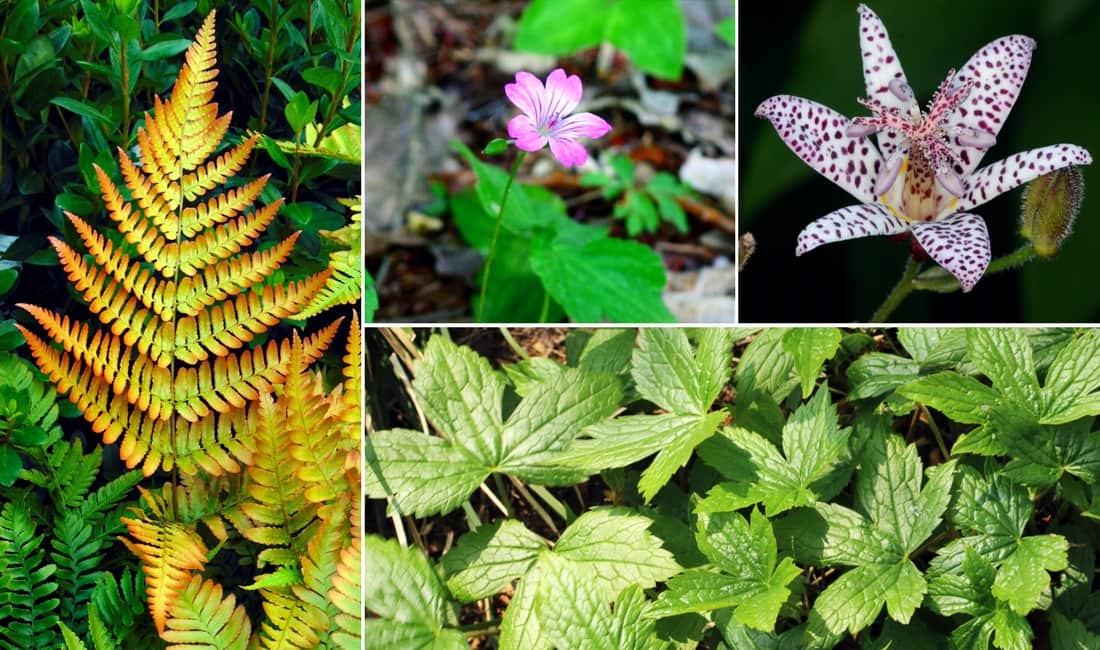
On the left, Dryopteris erythrosora, Geranium nodosum (flowering. photo Enrico Blasutto), top right, Tricyrtis formosana x hirta (photo Amada44), Geranium nodosum (foliage. photo Dominicus Johannes Bergsma)
In rockery
The varieties best suited to poor soils and drought are perfect for rock gardens. You can thus create a dry and mineral bed that requires little maintenance. Choose Geranium cinereum, a small variety with ash-grey, rounded leaves. It produces lovely pink flowers with a dark purple centre. Place a mineral mulch around it, made of gravel. This will keep its collar dry and prevent it from rotting. Plant some clumps of grasses alongside it for volume, as well as sedums and Dianthus deltoides for colour!
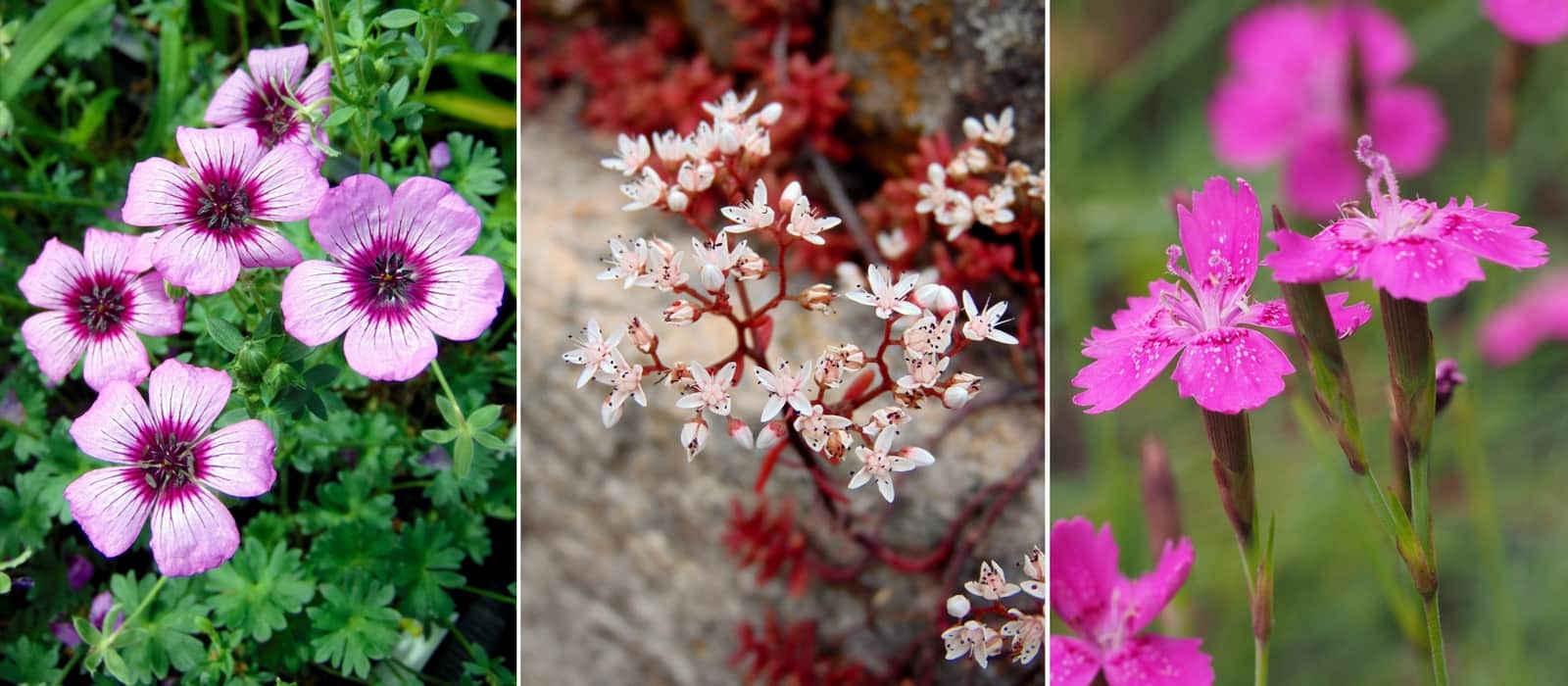
Geranium cinereum ‘Jolly Jewel Night’, Sedum album and Dianthus deltoides (photo Hajotthu)
For a naturalistic border
With their simple flowers and soft hues, hardy geraniums easily integrate into naturalistic borders. They have a wild and natural feel. Plant them alongside plants with a soft habit, among perennials or bulbs. Pair them with grasses such as Stipa tenuifolia or Calamagrostis acutiflora for their lightness. And, for colour, add some Allium, Nepeta or Salvia nemorosa ‘Caradonna’. You can also plant Apiaceae such as Seseli libanotis, yarrow or Eryngium.
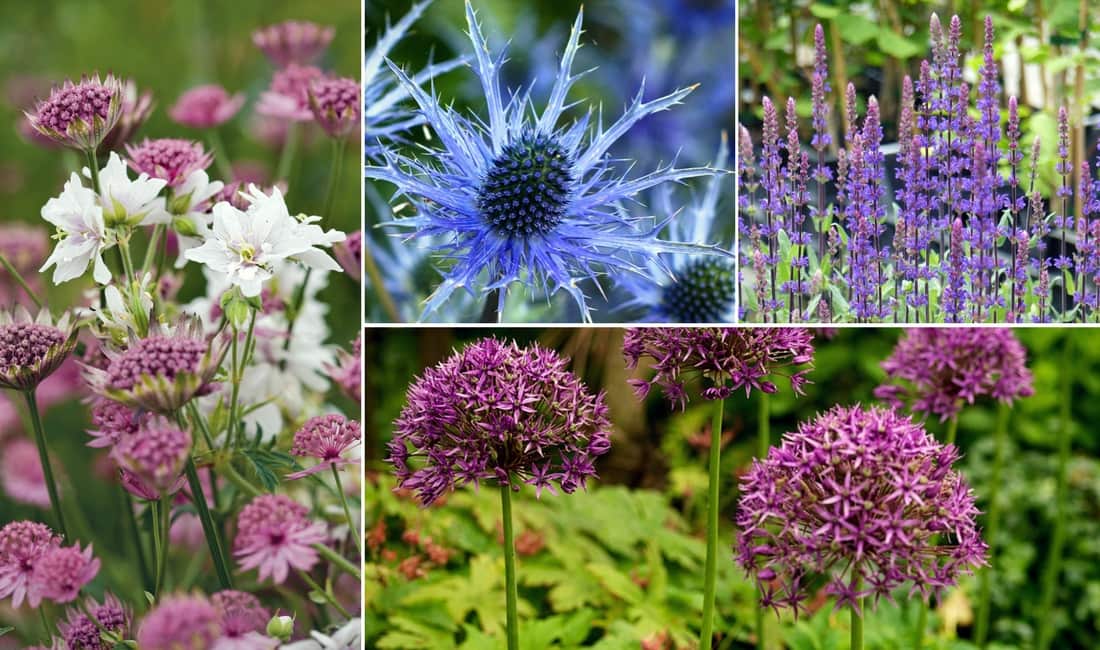
Geranium ‘Double Jewel’ and Astrantia ‘Roma’ (Copyright GAP Photos – Tommy Tonsberg), Eryngium, Salvia nemorosa ‘Caradonna’ and Allium stipitatum ‘Violet Beauty’ (photo JM van Berkel)
To play with colours
Play with contrasts by pairing Geranium phaeum with Persicaria ‘Red Dragon’. The dark purple foliage of the knotweed perfectly complements the flowering of the geranium, creating a stunning contrast with its light green foliage! You can also add dark tulips, such as Tulipa ‘Queen of Night’ or ‘Black Hero’. Dark shades have the advantage of revealing the intensity of other colours. Pair blue varieties with orange flowers, or violet-purple varieties with yellow flowers, their complementary colours. These shades enhance each other, creating a surprising and impressive effect. These are colours that one might not spontaneously associate, yet they work beautifully! You can plant the geranium ‘Salomé’ alongside Scabiosa ochroleuca, Nepeta govaniana, or Jerusalem sage. Create a more harmonious and less contrasting arrangement by combining several geraniums, for example, the blue-purple flowering of Geranium x magnificum and the soft pink flowers of Geranium endressii.
An article by Michael on our blog: Duo de vivaces aux tons noirs pourprés (Geranium phaeum ‘Lily Lovell’ and Persicaria microcephala ‘Red Dragon’).

Geranium phaeum and Persicaria ‘Red Dragon’
To dress the edge of a path!
Create a colourful, lush, and wild pathway! The blue flowering of Geranium ‘Johnson’s Blue’ harmonises with that of Delphinium. With its large yellow flower spikes, Phlomis russeliana adds volume and a touch of bright colour, echoing the yellow-green tone of the more discreet Alchemilla mollis. Nepeta ‘Walker’ and Centranthus ruber further enhance the colour in this picture. These fairly free-flowing blooms break the structure of the straight, linear stone path, adding a slightly untidy yet very natural aspect. This transforms a straight, monotonous, almost boring path into a vibrant, free-spirited, colourful, and sparkling walkway!
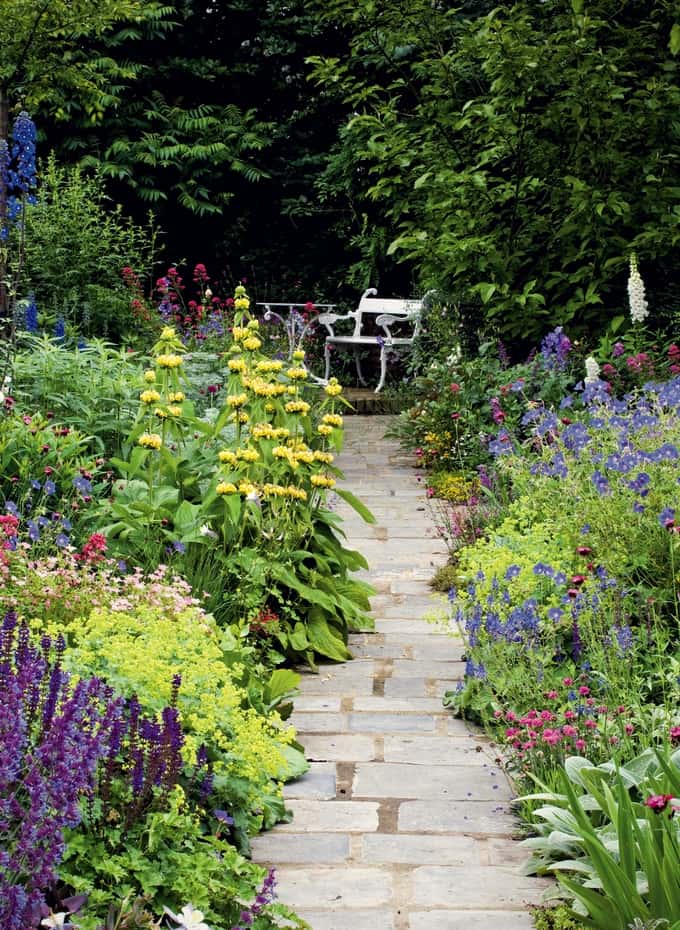
A colourful border with geraniums, Phlomis russeliana, Alchemilla mollis, Delphinium, and Nepeta ‘Walker’ (Copyright GAP Photos – Elke Borkowski)
For a romantic flower bed!
Enjoy hardy geraniums to create a romantic bed with soft and harmonious shades. The ‘Patricia’ geranium pairs beautifully with the flowering of Rosa versicolor and Digitalis purpurea, bringing softness and romance. The roses add height to the arrangement, while the alchemilla enhances the front of the bed. The surprising flowering of Crambe cordifolia brightens the bed, adding a lot of lightness. Together, they create a beautiful harmony of pink, blue, mauve, and white tones.
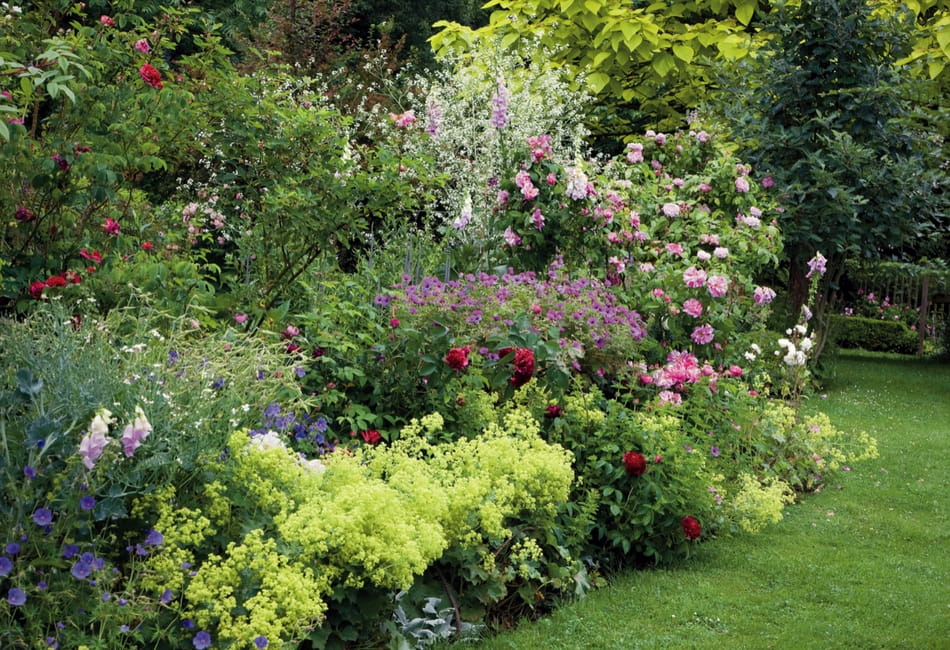
An idea for a combination in soft shades with Geranium ‘Patricia’, Alchemilla mollis, Digitalis purpurea, Crambe cordifolia, Rosa versicolor, and Catalpa bignonioides ‘Aurea’ (Copyright Biosphoto – NouN 2)
- Subscribe!
- Contents































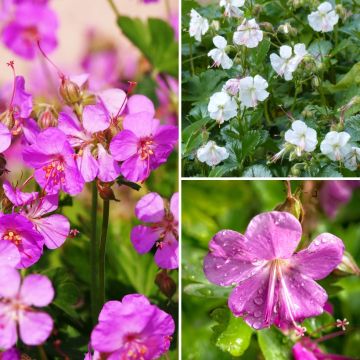
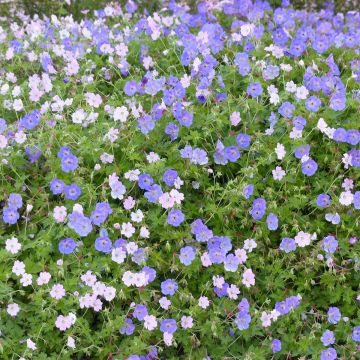
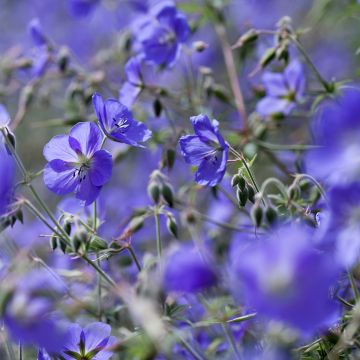
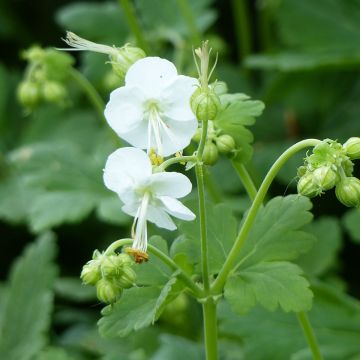
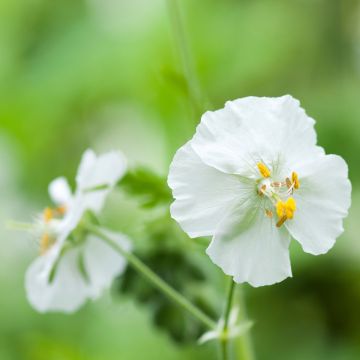
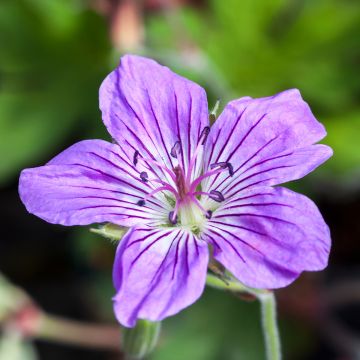
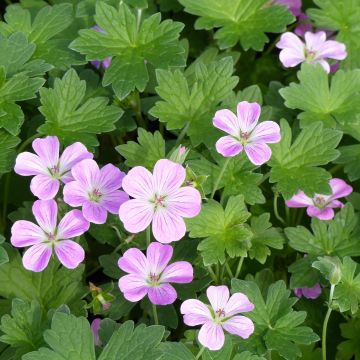
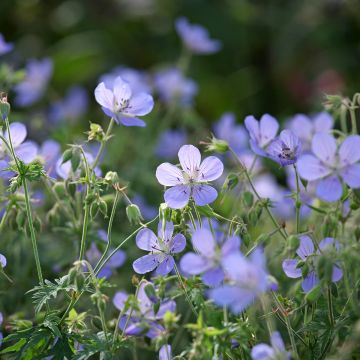

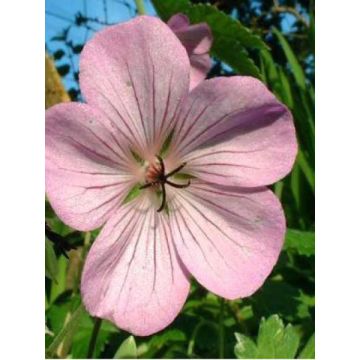
Comments